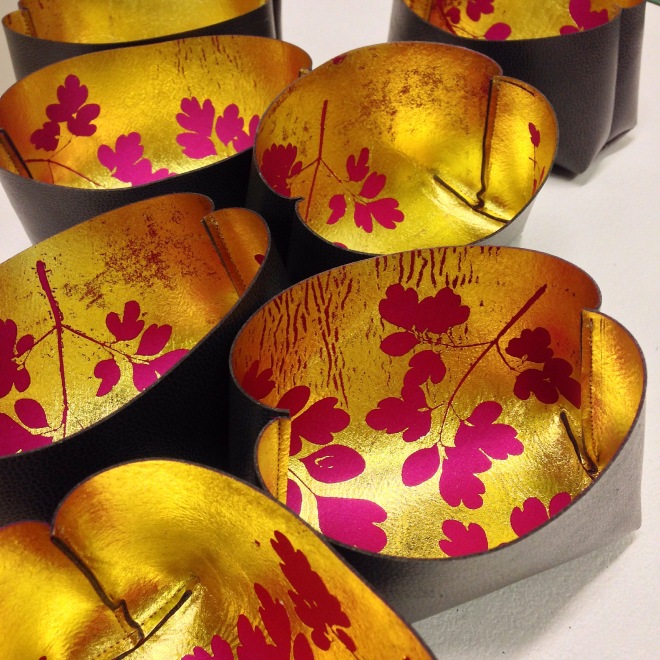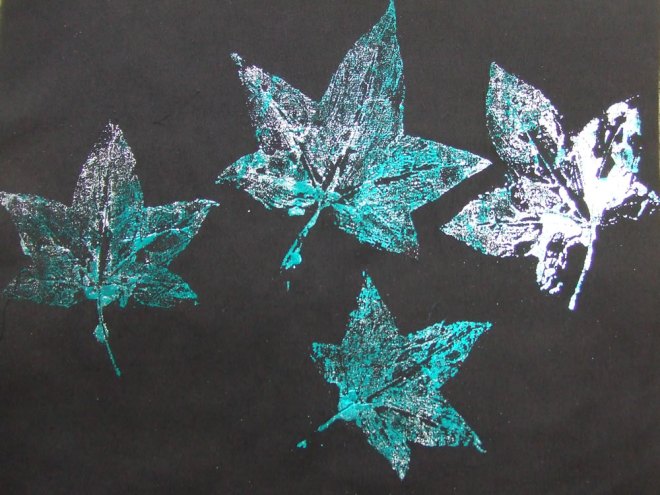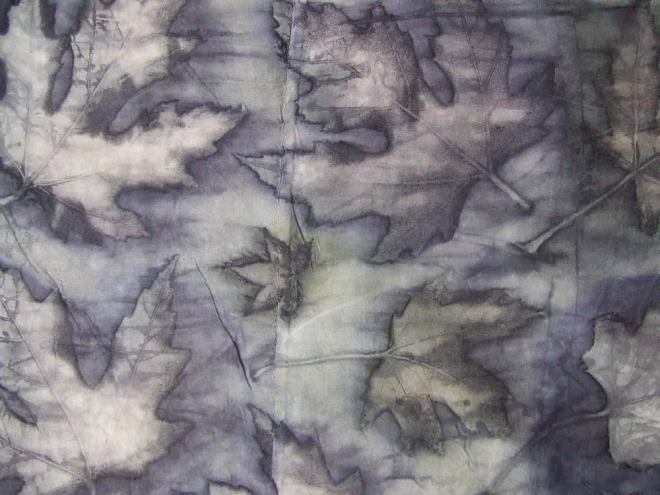A couple of months ago I showed you a sneak preview of some ecoprinting I’d been doing for a special commission. I can now reveal (drum roll!) that I was working on fabric for a wedding dress.

The stunning photo above is by The Kitcheners, who were the official wedding photographers. It reminds me of a Pre-Raphaelite painting, with the woodland setting off the autumnal colours of the dress perfectly.
It was nerve wracking to be asked to produce the fabric for such a special occasion but I’m over the moon with how it turned out.
It started when Daisy, an Etsy customer who had bought one of my ecoprinted scarves, contacted me to say that her daughter Mary was getting married, loved the scarf and wondered if I could ecoprint some silk for her wedding dress.
I admit my first reaction was panic. What would happen if it all went wrong on such a big occasion? And then there were the practicalities – I steam my ecoprinted fabric in a fish kettle, which limits its width to around 50cm, and I thought a wedding dress would require acres of fabric. But I agreed to talk about possibilities.
When we met up I explained the limitations of my facilities, but after we discussed the design of the dress they were interested in, it became clear that it could be possible.
I went off and printed some samples so that Mary could choose which colours and shapes she liked – and then took a deep breath and started printing the actual fabric. As ecoprinters know, there can be considerable variation in how leaves print, depending on the time of year, so it was important to try to get consistent results by printing all the fabric within a short period.
Each piece included rose and cotinus leaves for design continuity, plus a third type of vegetation for variety. These included sycamore seeds, eucalyptus, short-fruited willowherb, maple leaves, dock leaves and flowers and cranesbill leaves.
Daisy made the dress herself, and I think you’ll agree she did an amazing job. The silk was incredibly lightweight, and I wondered if she would have problems sewing it, but she said it was quite easy in the end.



As Mary was very interested in the process, I made her a small book as a keepsake. The front and back covers were covered with the cotton fabric dipped in iron solution that I used during the printing, and five internal pockets included some of the printed samples, dried sycamore seeds and a carefully wrapped rusty nail used to create the iron solution! I adorned the front cover with some more sycamore seeds stitched together.
So despite my initial trepidation, this was a wonderful creative collaboration to be part of. Mary was a beautiful bride, and both Daisy and I are proud – and relieved. 😉










































































